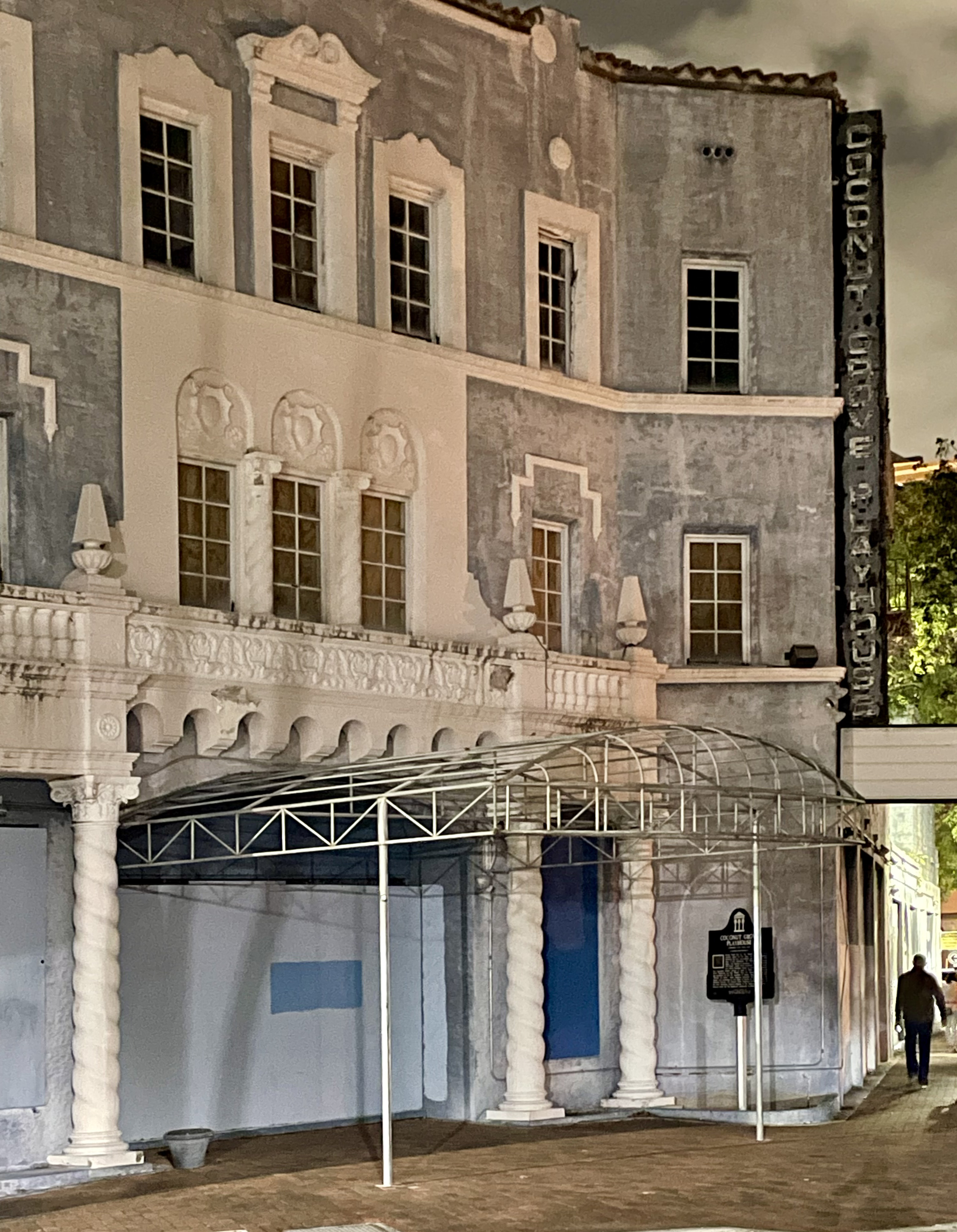Brief History of the History of the Coconut Grove Playhouse
Arnold Mittelman’s Acknowledgements
The Coconut Grove Playhouse has an incredible history. Listen to its last producing artistic director, Arnold Mittelman, commenting about preserving this history, which he has been able to do in this Archive with the generous support of the John S. and James L. Knight Foundation.
Lavish for that era, it had the largest Wurlitzer organ of any theater in the country and was the second movie theater on the East Coast with air conditioning. It opened during hard economic times and only operated until the mid-1930s. During WWII the U.S. Army Air Corps used the building for training, but after that, the theater did not resume operation as a movie theater. Save for one season in 1953 when a local theater tried to run it as a legitimate theater, it was closed until 1955. Then George Engle, a wealthy oilman, bought it.

Historical marker at the Playhouse, front.

Historical marker at the Playhouse, back.
Engle had a dream: Coconut Grove should have a performing arts center of its own. Alfred Browning Parker, a well-known Miami architect, converted the building so it could be used as a legitimate theater. After spending $1 million on renovations ($12 million in 2024 dollars), the Coconut Grove Playhouse opened in 1956 with the U.S. premiere of “Waiting for Godot.”
For the next 50 years the Playhouse gave Miami exceptional theater with many renowned performers.
Engle, who subsidized the operation for four years, bowed out in 1960. From 1960 to 1980, various owners or organizations owned and operated the Playhouse as a “for profit” theater. While it is doubtful that there was significant profit, there were sufficient generous benefactors to enable shows to go on. By the late 1970s, though, it became apparent that a more reliable funding source was needed.
In 2004, the City of Miami designated the building exterior as a landmark. That same year, the Playhouse embarked on an ambitious capital campaign. The goals: to correct structural and infrastructure deficiencies, to restore the iconic theater facade, and to make more efficient use of the site by including multi-story parking and a scene shop.
Coconut Grove Playhouse: Building plan for the future, 2004.

Coconut Grove Playhouse as it stands c. 2024.
In 2006 the Playhouse unexpectedly and abruptly closed. The Board considered the Playhouse’s financial problems significant enough to warrant this action. As of 2025 the Playhouse remains closed. The not for profit board was dissolved. The State of Florida, Miami Dade County Government and Florida International University have assumed control of the building and its surrounding vacant land. For almost two decades, despite some community protests and legal disputes to the contrary, various officials and architects proposed development for the Playhouse site that would demolish the 1100-seat main auditorium and 200-seat Encore Room and replace them with one new 300-seat theater. This plan is currently seen as the best way to secure the future of the renowned Coconut Grove Playhouse.
